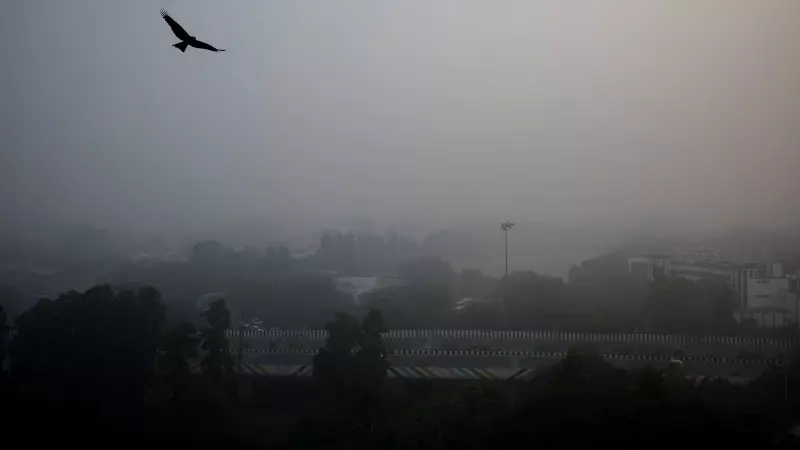
West Uttar Pradesh Towns Choke Under Toxic Air Blanket
Several towns in Western Uttar Pradesh are grappling with dangerously high levels of air pollution, with Baghpat emerging as the most affected area recording an alarming Air Quality Index (AQI) of 381. The pollution crisis has engulfed neighboring towns including Bulandshahr, Ghaziabad, Hapur, and Noida, all reporting AQI levels above 300, categorizing them in the 'very poor' range.
According to Central Pollution Control Board (CPCB) data recorded at 4 pm on Monday, Baghpat's air quality was even worse than Delhi's, which stood at 362 AQI. The severe pollution levels have prompted local authorities to issue public health alerts and implement emergency measures.
Health Crisis and Emergency Response
Health officials in Baghpat have sounded the alarm, particularly for vulnerable groups. Dr Teerath Lal, Chief Medical Officer of Baghpat, confirmed that public appeals are being made urging the elderly, children, and individuals with breathing difficulties to either avoid outdoor travel or use proper masks when venturing outside.
The district administration has placed all Community Health Centres on high alert to handle cases of breathing discomfort. Medical facilities have been instructed to spread awareness about the importance of mask usage and monitor pollution-related health issues closely.
Government's Innovative Approach to Stubble Burning
In a significant move to address one of the major contributors to poor air quality, the Uttar Pradesh Animal Husbandry Department has decided to aggressively promote its barter scheme. The initiative, named "Parali ke badle Gauvansh Khad," offers cow dung-based organic fertilizer in exchange for stubble that farmers typically burn.
Mukesh Meshram, Principal Secretary of Animal Husbandry, explained that the department will collect agricultural residue from willing farmers and provide them with cow dung manure and compost in return. The scheme leverages the resources of cow shelters across the state, which have abundant cow dung that can be converted into income-generating products.
The collected stubble serves multiple purposes - it's mixed with animal fodder and used to create value-added by-products at these shelters. The decision regarding the quantity of fertilizer to be exchanged for stubble has been delegated to local village panchayats managing the cattle shelters.
Previous Success and Current Expectations
This isn't the first time the government has implemented such a campaign. Earlier this year, the scheme proved successful with the government collecting approximately 3 lakh quintals of stubble in exchange for about 1.55 lakh quintals of cow manure. Officials are optimistic about achieving even higher participation and barter volumes during the current season.
To facilitate the process, the government has established livestock help centers where farmers can register, and their stubble will be collected directly from their homes, making the process more accessible and convenient.
Comprehensive Pollution Control Measures
The stubble barter scheme is part of a broader strategy to combat air pollution in the region. Recently, a high-level meeting was conducted in Meerut to address the pollution crisis across Western Uttar Pradesh.
During this meeting, specific instructions were given to the Transport Department to intensify monitoring of vehicle movement and strictly enforce regulations concerning older vehicles, particularly those aged 15-20 years that continue to operate on roads. Authorities have also been directed to keep a close watch on large-scale construction projects that contribute to dust pollution.
The complete list of affected towns and their AQI levels at 4 pm on Monday includes: Baghpat (381), Bulandshahr (306), Ghaziabad (312), Greater Noida (334), Noida (320), Hapur (324), and Khurja (308). The situation remains critical as authorities continue to implement both short-term and long-term measures to tackle the worsening air quality crisis.





